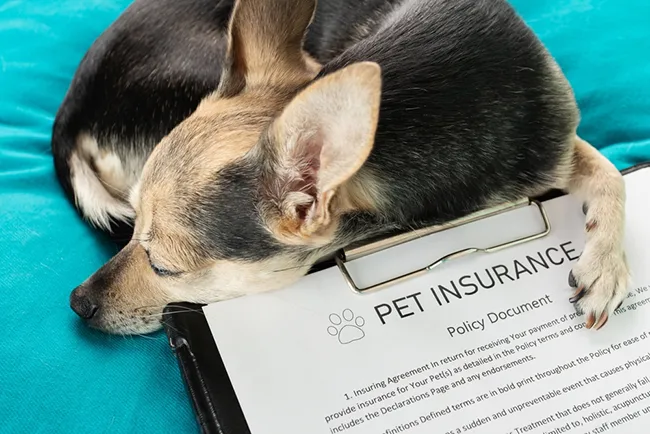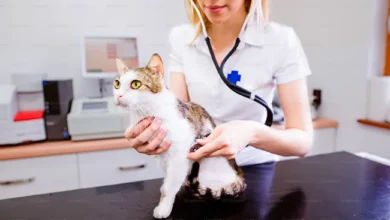
Owning a pet comes with its fair share of expenses, a fact well-known to pet owners. According to data from the ASPCA, the average yearly cost of having a cat is around $1,149, while caring for a dog can set you back approximately $1,391. These figures don’t even take into account the initial expenses when bringing your furry friend home, nor do they cover additional services like professional grooming or dental care.
Fortunately, there’s a solution that can help mitigate some of these costs – pet insurance. In this article, we’ll delve into how pet insurance functions, explore the advantages and disadvantages of having it, and assess whether the investment is justified.
Understanding Pet Insurance
Before delving into the advantages and disadvantages, it’s essential to comprehend what pet insurance encompasses. Pet insurance is a health coverage plan, much like human insurance, designed to shield pet owners from high, unexpected veterinary costs. Depending on the plan you choose, it can cover accidents, illnesses, routine care, and even medications.
Factors to Consider Before Investing in Pet Insurance
Before purchasing pet insurance, it’s crucial to consider several key factors to ensure you choose the right policy that meets your pet’s needs and your expectations. Here are some essential points to keep in mind:
- Cost and Coverage Questions: Begin by asking questions about the cost and coverage provided by the policy. You want to avoid getting stuck with a policy that doesn’t align with your requirements.
- Comparison Shopping: Take the time to shop around and compare different policies and their premiums. This will help you find the best value for your money.
- License and Legitimacy: Ensure that you’re buying insurance from a licensed insurance agent or broker in Washington state. You can verify this on the fortress.wa.gov website.
- Policy Cost Evaluation: Understand how the policy calculates costs. Determine whether it limits payouts by each incident, within a yearly timeframe, or throughout your pet’s lifetime.
- Age, Breed, and Coverage Factors: Ask about how premiums are determined based on your pet’s age, breed, and the specific coverage options you choose.
- Discounts: Inquire about potential discounts for insuring multiple pets, which can be a cost-saving option.
- Claims Process: Clarify the speed at which claims are processed and paid. Also, check whether claims are covered annually or per incident, and if there are any time limits associated with incident-based coverage.
- Vet Office Fees: Find out if there’s a dollar limit for veterinary office fees within the policy.
- Reimbursement: Understand the reimbursement process. Some companies may require you to pay the full bill upfront when your pet receives treatment, with reimbursement coming afterward for the covered amount.
- Policy Details: Carefully read and review the policy, paying attention to:
- Deductibles
- Copays
- Coverage limits
- Exclusions
- Pre-existing conditions
- Pre-existing Conditions: Determine if the policy covers pre-existing conditions, especially hereditary and medical conditions. Some policies may impose a waiting period for coverage to begin. For certain conditions like diabetes or cancer, they may be excluded entirely or covered on a limited basis. Often, a veterinary examination may be required to certify your pet’s health before insuring pre-existing conditions.
- Renewable Benefits: Be aware that if your pet receives treatment for a covered condition during the policy term, some companies may consider it a pre-existing condition when the policy renews. This could result in the exclusion of coverage for that condition in the renewal policy.
- Veterinarian Networks: Check whether the policy requires you to use a specific network of veterinarians. Ensure there is a veterinarian in your area or that your family veterinarian is within the network if you prefer not to change providers.
By considering these factors, you can make an informed decision when choosing pet insurance that best suits your pet’s health needs and your financial situation.
The Broader Landscape of Pet Care
Besides vet visits, there are numerous other aspects of pet care, including grooming, training, and regular check-ups. Using integrated platforms like pet grooming software can streamline these processes. The modern pet owner often leans on technology for scheduling, record-keeping, and reminders. Understanding how insurance integrates with these systems is essential for a seamless pet care experience.
Pros of Pet Insurance
Embarking on the journey of pet ownership is filled with joy, companionship, and responsibility. One such responsibility is ensuring the well-being of our furry companions, especially when they face health challenges. Pet insurance can act as a supportive tool in this endeavor. Here are some notable advantages to consider when weighing its importance:
- Financial Security: Veterinary care can be expensive, especially when it comes to surgeries or chronic conditions. Pet insurance can cover a significant portion of these costs, ensuring that you don’t have to dip into savings or go into debt when unexpected medical bills arise.
- Peace of Mind: Knowing that you’re covered in the event of an emergency can ease the stress associated with potential vet bills. You can focus on your pet’s recovery rather than worrying about the financial implications.
- Flexible Coverage Options: Many pet insurance providers offer various plans tailored to your pet’s needs, ranging from accident-only coverage to comprehensive plans that include wellness checks and routine care.
- Encourages Regular Check-ups: With certain insurance plans, regular check-ups and preventive measures might be covered, ensuring that your pet remains in the best health possible. This can lead to early detection of issues, which can be beneficial in the long run.
- Integration with Modern Pet Services: The advancement of technology in the pet industry, such as pet grooming software or pet grooming scheduling software, means that pet care is becoming more streamlined and efficient. This could potentially make claims and record-keeping smoother for those with pet insurance.
Cons of Pet Insurance
While the idea of a safety net for your pet’s health can be appealing, it’s essential to approach the topic of pet insurance with a balanced perspective. Every coin has two sides, and understanding potential drawbacks can help in making an informed decision. Let’s discuss some of the challenges and considerations tied to pet insurance:
- Cost of Premiums: While pet insurance can provide substantial coverage, the monthly or yearly premiums can be a significant expense. Over a pet’s lifetime, these premiums might exceed any payouts you receive, especially if your pet remains generally healthy.
- Coverage Limitations: Some insurance policies have specific limitations or exclusions, such as pre-existing conditions or certain breeds. It’s essential to read the fine print and understand what’s covered and what’s not.
- Reimbursement Model: Unlike human health insurance, many pet insurance policies operate on a reimbursement model. This means you’ll have to pay vet bills upfront and then wait for the insurance company to reimburse you.
- Potential for Over-utilization: With insurance covering a chunk of the costs, there might be a temptation to seek veterinary care more often than necessary, leading to unnecessary tests or procedures.
- Alternative Savings Options: Some argue that instead of paying for pet insurance, setting aside a specific amount in a savings account monthly for potential pet expenses could be more cost-effective in the long run.
Conclusion
The decision to invest in pet insurance is a personal one, based on various factors like your financial situation, your pet’s health, and your risk tolerance. It’s crucial to weigh the pros and cons and consider how they apply to your unique circumstances.



